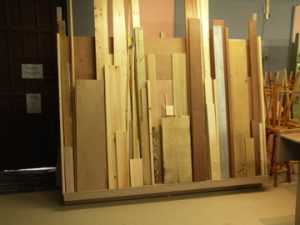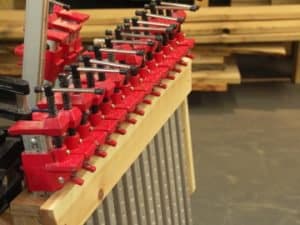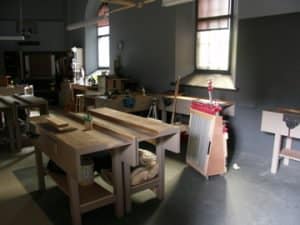My Creative Workspace Order versus Chaos
Notes from my journal
For some time I have talked fairly extensively about the creative sphere of work and the creative workspace. This is not so much ethos and philosophy, but how or where we working craftsmen develop work as practicing artisans. I in no want to or intend to differentiate between men and women, but speak purely as a man from a man’s perspective. I have learned many things through the years and one of them is that women tackle work differently than men, based on the reality that what works for a man might well not work for a woman.
Having worked with individuals and groups of woodworkers through the years, I note several key differences between men as they work. It’s become more apparent through the years that half the workforce lays claim to an ability to multitask while the other half accede to being limitedly focussed. I find myself readily working in both spheres depending on certain criteria. Teaching a class of 16 rookie woodworkers demands that I multitask unequivocally. Designing a new piece or writing an article due for press in a week demands focussed attention and no distraction. In the workshop, craftsmen multitask according to need.
My wood rack is simple and practical for ordering my current stock of wood
The fact is that some tasks are multitaskable and others are singularly expedited. Two spheres of creativity equally enjoyable and distinctly separated.
I like my workshop when it looks orderly and all the clamps and wood have their place and my tools are settled in the toolbox neatly aligned, sharp and ready for my demands. At the end of each day I focus on creating order, tools stowed, bench swept and floor cleared free of all obstruction. The natural break to accomplish this is when the day’s work’s completed and this is the time I sharpen all of my tools too, so that in the morning they are keen and ready to work.
My rack holds thirty clamps in all and is on wheels so I can wheel it to my bench
During the day I pull tools out and use them. Some I use only once or twice and put back without delay. Wood scraps build up and so too the shavings and sawdust. I sweep into piles occasionally and sometimes transfer them to the bin. Most often, when i am thinking through a phase, i sweep and tidy. This physical reconcilliation helps me to creatively order my work. But my tools, about ten of them usually remain untouched on the bench. The square is the master of them all. Singularly important, the square makes all other tools answerable to truth, guides them as they saw and cut, plane and shave.
The benches are orderly and clean at the end of each day and the tools are sharpened before ai leave for home. This is my habit.
Order is critical to creative work no matter the appearance of disorderliness. I place my tools ready to use, not lined up like peas in a pod, but angled to my right hand. My plan stands upright not lying on its side. The cutting edge is thus protected beneath. Part of critical creativity is continuity of thought and rhythm of work through every cycle. Flow must be unbroken, seamless if you will, for consistency, otherwise patterns are compromised resulting in unevenness. For the carver and the violinmaker this becomes normal. Surface textures change by stroke and sway from this line of though and action. This stands true in all crafts: in sewing and weaving, basketmaking and smithying iron on the anvil. Consistency breaks and so too the rhythmic pattern.




